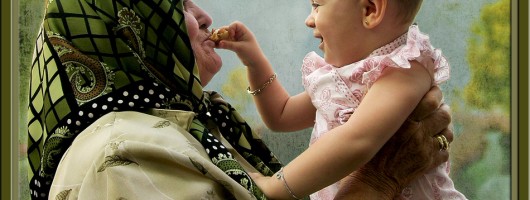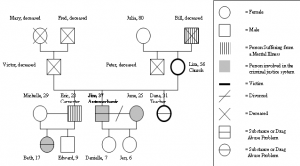Multigenerational Transmission Process
Posted by Isaac Butterworth | Filed under Bowen Theory

The concepts of Bowen theory proceed one out of the other. If the family projection process explains how differentiation and undifferentiation are passed from one generation to another, the multigenerational transmission process is simply that same phenomenon, writ large, through the generations.
Emotional Processes in Families
Varying levels of differentiation in different siblings can give rise to whole branches of families that are ascending or descending on the Differentiation of Self Scale. The enormity of this phenomenon makes us realize that all of us are only a small part of something much larger than we are by ourselves. Many people are too cut off to take much interest in the generations of their families. But for those who make the effort there is great reward. They constantly demonstrate it in their lives.
Observing the Generations
Many people start by making contact with the oldest members of their families. This can be a rich, connecting experience. Older relatives are often glad to share what they know. Simply connecting with these family members can bridge existing emotional cutoffs, an outcome that may yield a sense of feeling well grounded and more functional than before. Learning how people have related to one another within and across generational lines helps make sense of the present day emotional process of the family.
The Family Diagram
In her book, The Eight Concepts of Bowen Theory, Roberta M. Gilbert introduces the use of a family diagram as a tool for observing the multigenerational transmission process. Emotion-colored stories (as long as they are factual) offer much to our understanding of differentiation among members within a family system. Important facts include the following:
- names
- longevity of family members
- health
- their locations, including moves (with dates)
- their incomes and businesses or professions, including what positions they held
- reproductive history, including abortions, stillbirths, and miscarriages
- marriages, living-with arrangements, divorces, and separations
- dates of births, deaths, marriages
- highest degree of education or year in school
Here is a sample family diagram, displaying four generations, along with an explanation of symbols:
By convention, males are recorded as squares and females as circles. The goals in constructing a family diagram are to develop a one-to-one relationship with as many living people in the family as possible and to learn as much as one can about other generations.
Researching the Generations
In studying the multiple generations of a family, we want to look for themes and topics such as these:
- Death / How has each generation in our family approached death and loss?
- Survival / What has each generation survived? How has the experience of one or more generations impacted the family across the years? How does the anxiety of one generation continue to manifest itself in succeeding generations?
- Reproduction / What similarities exist across generational lines around such issues as birth and abortion?
- Money / What patterns can be observed with regard to making, collecting, earning, or using money?
- Religion / How are the beliefs and religious practices of former generations preserved or reacted to in subsequent generations? Has anyone cut off from the family because of someone marrying outside the faith or changing denominations?
- Divorce and Separation / Has divorce or separation led to emotional cutoff? If so, how?
- Nodal Events / How have people entered or left the family? What degree of tumult resulted?
- Watershed Events / Have their been large-scale, perhaps even cultural or historical events, that have impacted the family (wars, global economic conditions, persecution of an ethnic group, immigration, etc.)?
Other subjects related to the emotional processes of a multigenerational family system may be researched, and every effort can lead to great benefit. There is no better way to remove a “block” in life, to work on a stubborn personality characteristic or irrational belief, or in general to become a little more objective than to take a specific question back through the generations of one’s family to see what can be learned from the people that have gone before us.
Photo Credit: Food of Love by Collin Key
Source of Sample Family Diagram: Reentry Policy Council








December 23, 2010 at 11:28 am
[…] Multigenerational Transmission Process […]